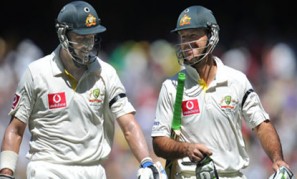The possibiliy of Jofra Archer's career coming to an early end will rob cricket of a bowler with so much talent
While a premature retirement isn’t the solution, he or England want, he may be forced into it if he can’t maintain a long run of matches.

It seems with every Test match, Australian cricket is diagnosed anew. Depending on the result of the last game, we are either witnessing a grave nadir for the baggy green, or are standing on the precipice of a golden era of youthful verve and brash domination. It simply cannot be both, and it cannot change so quickly.
Indeed, sometimes this diagnosis changes within the same Test.
In Cape Town, Australia’s first innings revealed a crippling lack of depth in its batting stocks.
Then Michael Clarke walked to the wicket to belt a defiant century, the bowlers rolled South Africa for less than 100, and suddenly we were united for the long haul behind our fearless leader. Then, at 9/21 in the second innings, it was a crisis again.
Then in the second Test Pat Cummins put on the magic with his six wickets in the second innings, and by the time he had hit the winning boundary in an unlikely two wicket win, Australia was charging headlong into a golden age all over again.
Unfortunately Cummins managed to get injured during that game, and we’re yet to see him again. But fear not, while he recuperated, James Pattinson unleashed a fury of pace and swing on the unsuspecting and unequipped Kiwis at the Gabba. Once he’d taken his fifth wicket on that remarkable Sunday morning and Nathan Lyon had swept up to the tail to maintain his mid-20s average all doubt was gone. Australia was back, baby.
Then on the last day in Bellerive, even the most cynical must have been converted as Dave Warner slashed and drove his way to a match winning hundred. Oh, pardon me, that was a man of the match winning hundred. Warner’s performance aside, the remarkable collapse in Hobart was all the evidence the critics needed: Australian cricket is in permanent decline, the Argus review has fixed nothing, and it’s time to start all over again.
In the last four days of cricket we have seen Australia’s finest deliver that same range of possibilities once more. Mid way through Boxing Day it was all sorted: new opening pair of complementary styles, Ponting making runs, everything coming together.
Then there’s a small collapse, and by the time India get to 2/214, Australia are once again a combination of a timid batting line-up and an impotent bowling attack.
By lunch on day three it’s a bold new era for Australian bowlers, at 4/21 in the second innings it’s a black day for Australian batting, and then when Hussey and Ponting steady the ship everything is ok again because we can rely on the experience. When the bowlers come out and slice through the Indian order the balance looks just right. Everyone is now writing about how good this Australian side is, and how much better it will become.
The issue here is that we cannot judge the Australia team session by session, day by day or even game by game.
This sort of scattered logic is exactly how a lot of the trouble started. It’s exactly how Xavier Doherty can come into the team with a first class bowling average of 45 because he took four wickets in a one day game. It’s exactly how he can then be replaced by Michael Beer.
This Australian team is neither in irreversible decline on the brink of total domination. It is a team with a mixture of potential, fading abilities, brilliance and mediocrity. They can be tenacious, and they can lack vigour. The headline writers and critics must realise that they do not need to instantly place this Australian team at one of the extreme ends on the scale. One good performance each from Pattinson and Cummins does not mean that they will terrify in tandem like Curtly Ambrose and Courtney Walsh.
One poor innings from the batsmen does not mean they all need to sit in the pavilion watching The Cricket Show put on a master class with a polo-shirt wearing Mark Taylor and Ian Chappell.
Excessively dramatic assessments of either a positive or negative nature are not constructive or helpful to anything other than selling newspapers. Both create a destructive pressure, and totally lack the nuance necessary to see Australia through an uncertain period in its cricketing history.